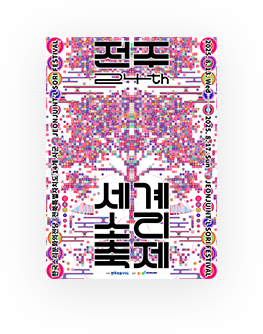d-day
D
-
26


2025. 8. 13. Wed - 2025. 8. 17. Sun

60 Minute
Pay
Suitable for ages 8 years and older
Exploration of the Musical Essence of Roots with a Contemporary Twist!
<Vocal Fever> featuring Beompae, Gagok, and Folksongs from the Gyeonggi Province
The 2025 Sori Festival brings together a variety of genres that reflect the contemporariness while preserving the essence of traditional music, under the section titled <Vocal Fever>, The section features “Beompae,” a vocal genre sung during Buddhist rituals; “Gagok,” a singing genre of traditional poems to the accompaniment of traditional instruments; and “Gyeonggi Minyo,” which means folksongs from the Gyeonggi Province. Do not miss the <Vocal Fever> that aligns perfectly with the Festival’s keyword of this year, “Echoes from the Homeland!” Audiences will be given a great opportunity to experience the unique charm of traditional vocal music of Korea.
A Special Stage Where the Essence of Gyeonggi Folksongs Can be Explored
Experience of a variety of Minyo Pieces All in one Place!
How far can the charm of Gyeonggi folk songs extend? Once one of the most beloved songs, Gyeonggi Province’s minyo (folksong), sung by professional singers centered in Seoul, includes twelve japga, tongsok minyo, gyeonggi japga, and gut-songs. It is a great fortune to be able to experience the essence of Gyeonggi minyo in a single place. Led by Master Lee Chunhee, a holder of the National Intangible Cultural Heritage Gyeonggi minyo, Kang Hyojoo and Chae Soohyun will bring the audience into the colorful world of Gyeonggi minyo.
“Jipjangga,” one among the twelve japga repertoires, is from a scene within the pansori “Chunhyangga.” “Seonyuga” is a boat song. Additionally, the performance will feature a variety of pieces currently categorized as Gyeonggi minyo, including “Arirang,” which is listed as a UNESCO Intangible Cultural Heritage, “Geumgangsan Taryeong,” one of the songs between minyo and jangga, “Hoesimgok,” the most popular Buddhism-related song, “Seoul Gunnorae,” and “Changbu Taryeong,” et cetera. These songs, which convey the sentiments of the common people through their leisurely mood, will be performed with master musicians’ instrumental accompaniment, adding to the joyfulness.